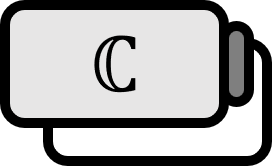What is a Conformal Mapping in Complex Analysis?
Definition 1
A function $f: A \subset \mathbb{C} \to \mathbb{C}$ that is analytic at $\mathscr{R} \subset A$ and for all $z \in \mathscr{R}$ satisfies $f ' (z) \ne 0$ is called a Conformal Mapping if $f$. Meanwhile, if there exists a point $\alpha$ that satisfies $f ' (\alpha) = 0$, then $\alpha$ is referred to as the Critical Point of $f$.
Description
As the Chinese characters for conformal (等角) directly imply, angles between figures are preserved under a conformal transformation.
It’s essential to know that the composition of conformal mappings is still a conformal mapping. Proof of this can be sufficiently demonstrated by verifying the following contrapositive. $$ (f \circ g) ' = f '(g) g' = 0 \iff g' = 0 \lor f ' = 0 $$
Such conformal transformations are very important in complex analysis, which often deals with simple closed paths, as they are helpful when handling integration paths. Geometrically, critical points can be considered points where the direction changes completely, i.e., where it pivots. On the other hand, analytic functions that are injective have the following two crucial properties.
Fundamental Properties 1
- [1]: If a function $f$ is analytic and injective in $\mathscr{R}$, then for all $z \in \mathscr{R}$, $f ' (z) \ne 0$ is satisfied. In other words, $f$ is a conformal mapping.
- [2]: If a function $f$ is analytic and injective in $\mathscr{R}$ and maps a simple closed path $\mathscr{C}$ to $\mathscr{C} ' $, then $f$ maps points inside $\mathscr{C}$ to either the inside or outside of $\mathscr{C} ' $ only.
- Note that the condition in [1] is not sufficient and necessary. [2] Is particularly important because, by checking just one point inside $\mathscr{C}$, one can determine whether the rest of the points are mapped to the inside or outside of $\mathscr{C} ' $.
